


Next: Matrix Form of 2D
Up: fourier
Previous: Two-Dimensional Fourier Transform (2DFT)
Consider the Fourier transform of a continuous but non-periodic signal
(the result should be easily generalized to other cases):
where  and
and  are the frequencies in the directions of
are the frequencies in the directions of  and
and  ,
respectively. This double integration is a linear combination, with
complex weight
,
respectively. This double integration is a linear combination, with
complex weight  , of the complex exponential composed of two
sinusoidal functions:
, of the complex exponential composed of two
sinusoidal functions:
To understand the physical meaning of this 2D Fourier transform, we first
consider the complex exponential
 and the complex weight
and the complex weight
 separately:
separately:
It the 2-D signal
 is real, i.e,
is real, i.e,
 , then its 2-D Fourier expansion can be written as
, then its 2-D Fourier expansion can be written as
The 2D Fourier transform represents a real signal  as a linear
combination (integration) of infinite 2D spatial sinusoids with
as a linear
combination (integration) of infinite 2D spatial sinusoids with
- amplitude

- phase

- frequency

- direction

The amplitude and phase are determined by the complex coefficient  ,
while the frequency and direction are determined by the spatial frequencies
,
while the frequency and direction are determined by the spatial frequencies
 and
and  .
.
Example 0
The 2-D function shown below has three frequency components (2D sinusoidal
waves) of different directions:
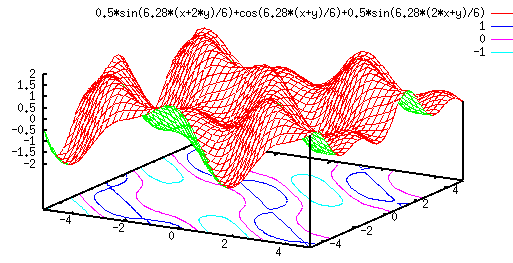
Example 1
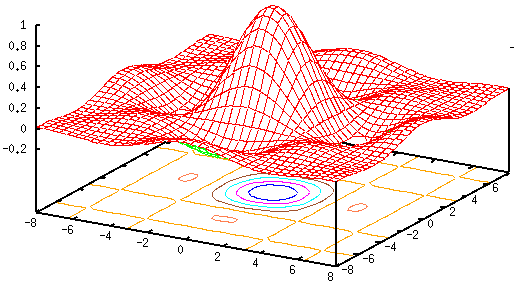
Example 2
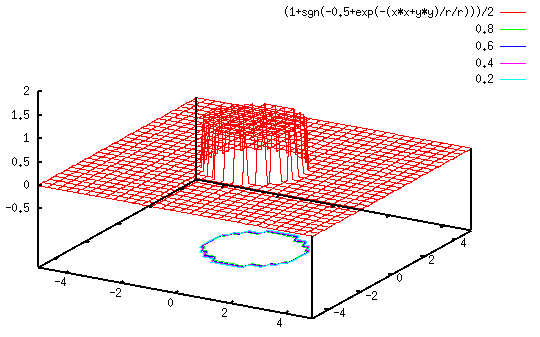
It is more convenient to use polar coordinate system in both spatial and
frequency domains. Let
and
we have:
To continue, we need to use 0th order Bessel function  defined as
defined as
which is related to the 1st order Bessel function  by
by
i.e.
Substituting  for
for  , we have
, we have
We see that the spectrum
 is independent of angle
is independent of angle  and therefore is central symmetric.
and therefore is central symmetric.
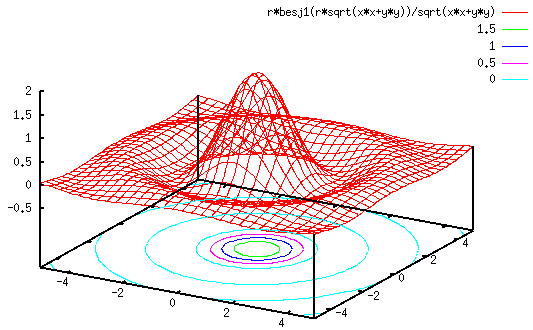
Example 3 More 2-D FT examples:
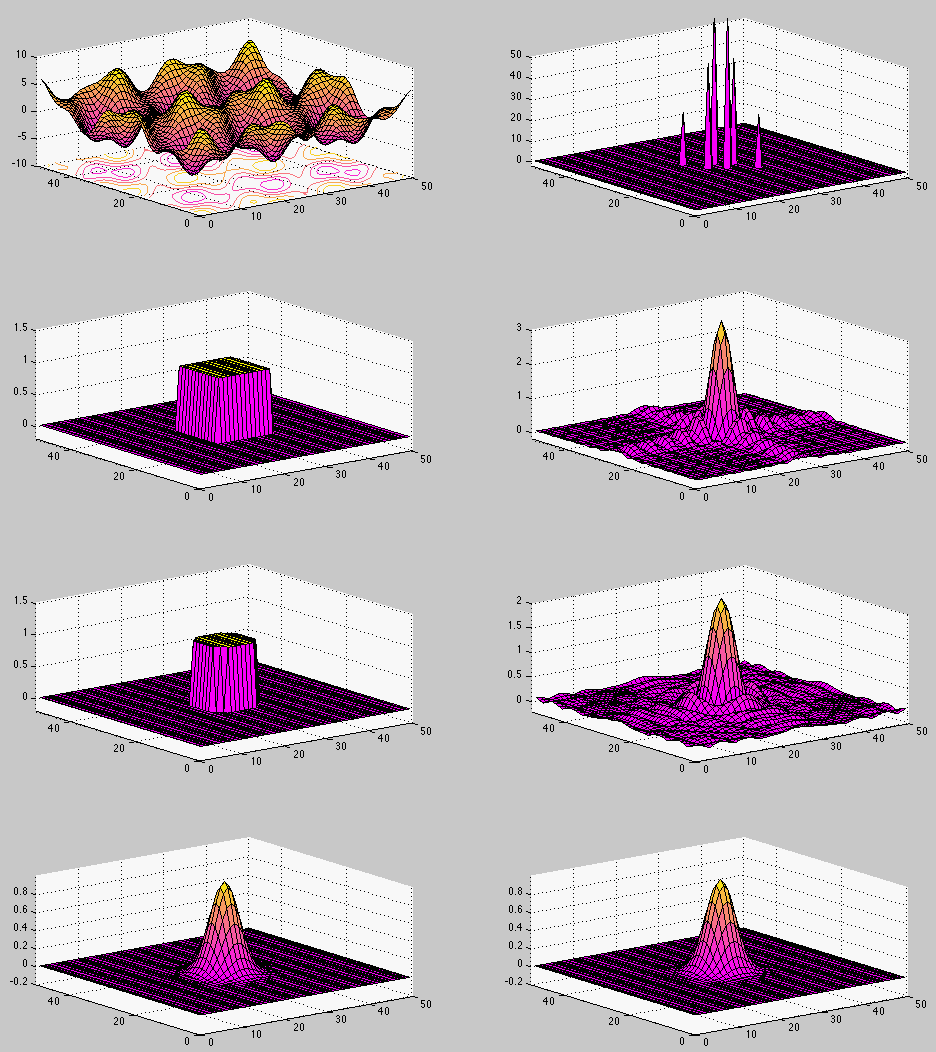
Example 4
2D DFT of an image:

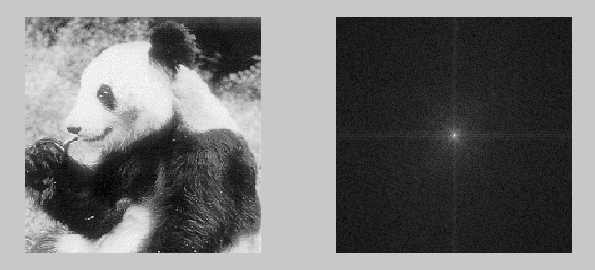



Next: Matrix Form of 2D
Up: fourier
Previous: Two-Dimensional Fourier Transform (2DFT)
Ruye Wang
2015-11-12

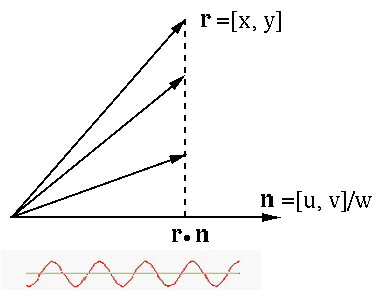
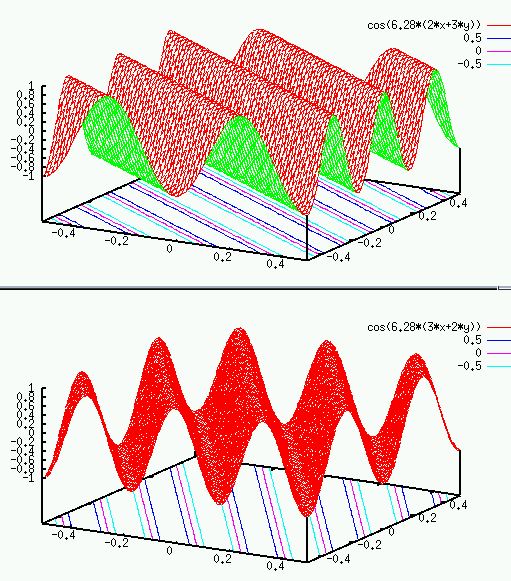
![]() can also be represented
in polar form in terms of its amplitude
can also be represented
in polar form in terms of its amplitude ![]() and phase
and phase
![]() :
:

![]() is real, i.e,
is real, i.e,
![]() , then its 2-D Fourier expansion can be written as
, then its 2-D Fourier expansion can be written as

![$\displaystyle \int \int_{-\infty}^{\infty} \left[ F_r(u,v) \cos(2\pi w {\bf n} \cdot {\bf r})
-F_j(u,v)\sin(2\pi w {\bf n} \cdot {\bf r}) \right] \;du\;dv$](img260.png)
![$\displaystyle \int \int_{-\infty}^{\infty} \vert F(u,v)\vert
\left[ \cos\angle...
...bf r})
-\sin\angle F(u,v) \sin(2\pi w {\bf n} \cdot {\bf r}) \right]\; du\;dv$](img261.png)
![$\displaystyle \int \int_{-\infty}^{\infty} \vert F(u,v)\vert\;
\cos [(2\pi w {\bf n}\cdot {\bf r})+\angle F(u,v)]\; du\;dv$](img262.png)









![$\displaystyle \int \int_{-\infty}^{\infty} f(x,y) e^{-j2\pi(ux+vy)} dx dy
= ...
...{-j2\pi r\rho(cos \theta cos \phi
+ sin \theta sin \phi)} d\theta \right] r dr$](img275.png)
![$\displaystyle \int_0^R \left[ \int_0^{2\pi} e^{-j2\pi r\rho cos (\theta-\phi)}
...
...\int_0^R \left[ \int_0^{2\pi} e^{-j2\pi r\rho cos \theta}
d\theta \right] r dr$](img276.png)
![]() defined as
defined as




